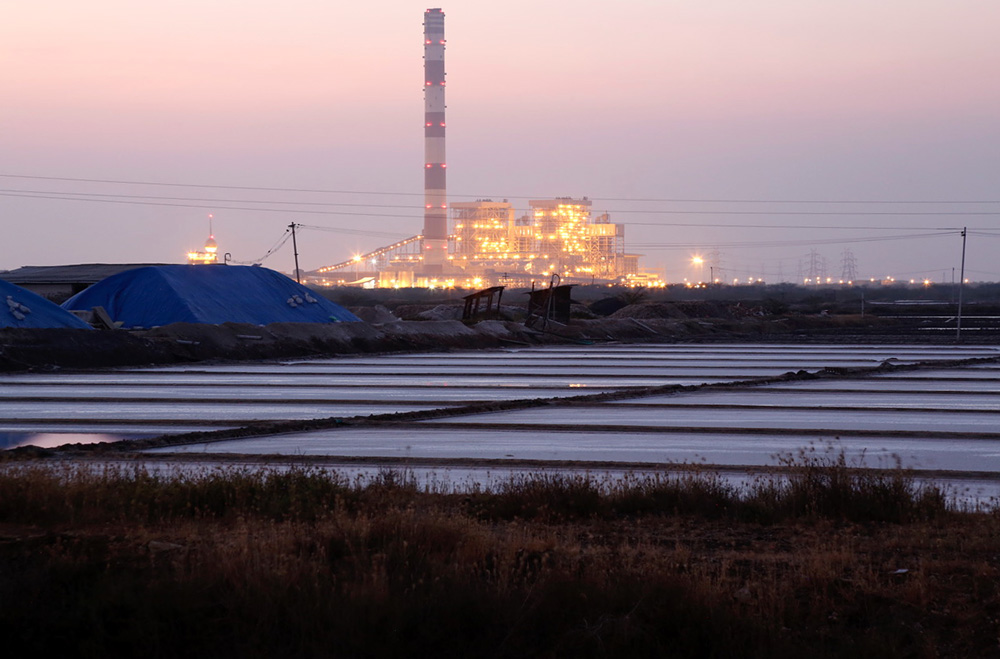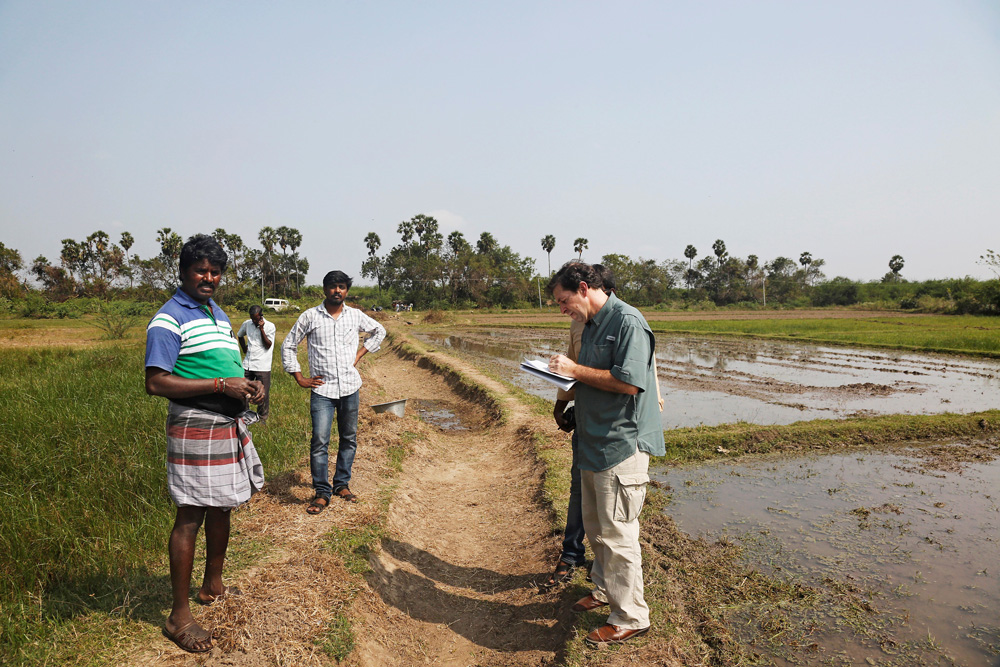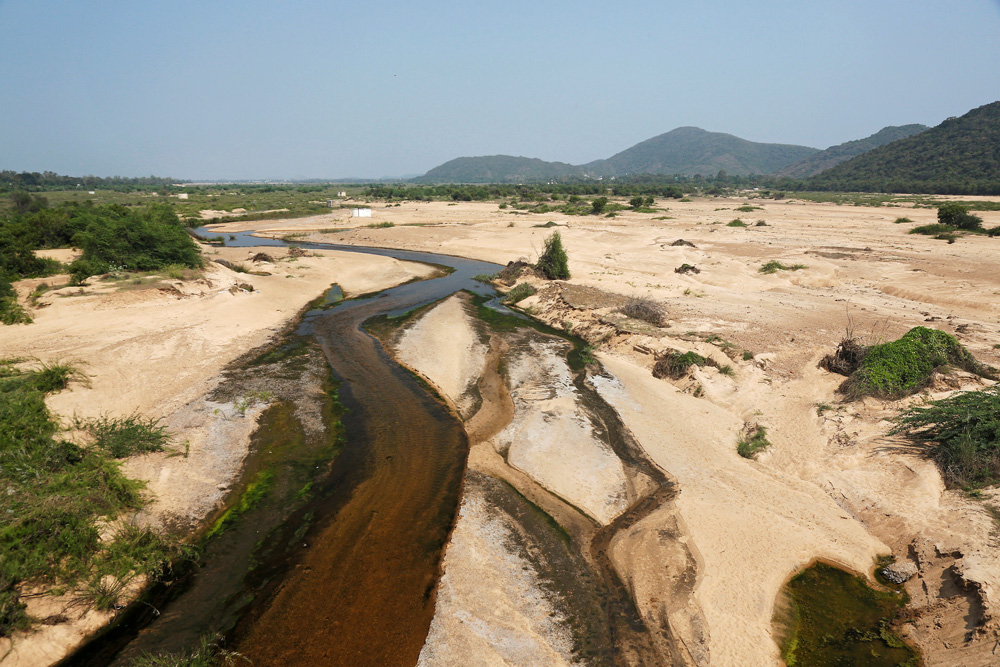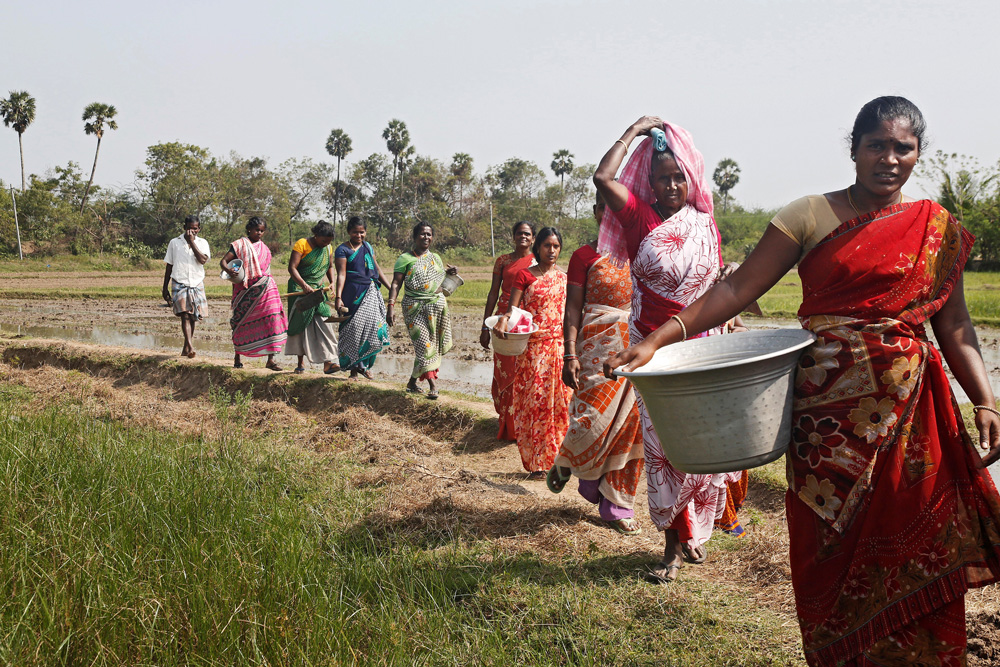-
Introducing “Choke Point: Tamil Nadu,” a Look Inside One Indian State’s Struggle With Severe Water Stress
January 31, 2017 By Keith SchneiderTUTICORIN, India – Among the 75 government agencies that manage and regulate this bewitching and often impassioned nation, there is no Ministry of the Future. There should be.
Narendra Modi, India’s prime minister, has stirred a buying spree, coaxing domestic and international investors to build new ports, develop new mines, build electric generating stations, purchase military jets and ships, and lure multinational high-tech companies to set up back-office operations in the country’s biggest cities. The Modi development-at-any-cost model looks a lot like the plan that the United States and Europe deployed after World War II and the Chinese have executed since Deng Xiaoping opened the economy in the 1980s.
The 21st century, though, has produced new circumstances of dire ecological stress, disarray in economic markets, and empowered civic resistance that are impeding Modi’s goals. An Indian Ministry of the Future would help this nation of 1.3 billion people understand that altered patterns of rainfall and water use are literally drying up the nation, causing huge financial losses, and leading to deepening social conflict.
Tamil Nadu is on the frontlines of the powerful forces beginning to bludgeon Earth’s coastal regionsSuch a ministry could easily start its work here in Tamil Nadu, the southeast Bay of Bengal state that encompasses Chennai, India’s fourth largest city, and the very tip of the subcontinent. Tamil Nadu is renowned in India for its thriving cities, superior medical care, and fine universities. Defined by the sea on the east and south, tall mountains and forests to the west, and flat coastal plains, Tamil Nadu is also pitched on the frontlines of the powerful forces of climate change, water scarcity, and rapid population growth that are beginning to bludgeon the Earth’s densely populated coastal regions.
This month, Circle of Blue, a water research and communications organization, in collaboration with the Wilson Center, is here to take a close at how this state of 78 million residents and India’s second-largest economy is responding to powerful disruptions in water supply, energy, and farm and business markets.
With the help of Care Earth Trust, a Chennai-based environmental science group, and four Indian journalists – environmental reporters S. Gopikrishna Warrier and Sibi Arasu, and photographers Dhruv Malhotra and Amirtharaj Stephen – we are producing “Choke Point: Tamil Nadu,” the latest chapter in our Global Choke Point project on the competition for water, energy, and food on a planet challenged by a rapidly changing climate.
A Laboratory of Eco-Stress
Tamil Nadu’s treacherous position along a dynamic coastline of warm, storm-empowering water is exacting a huge economic and human toll. Erratic rainfall and sharp growth in population and businesses has drained groundwater. Industrial and human wastes contaminate surface water. A sizable share of the drinking water in the capital of Chennai is transported from rural wells and served from tanker trucks and plastic bottles.
A deep drought now grips much of the state, killing harvests, producing shortages of drinking water, and causing riots. The drought generates such stress on farmers in the delta region, one of India’s great grain food bowls, that 17 farmers have committed suicide in the last several months. Over 100 more have died of heart attacks. A 59-year-old cardiologist we spoke to said he never witnessed such mortality from a depleted harvest.
November and December are especially tough months for Tamil Nadu. A month ago, a cyclone blasted the northern reaches of the state, piling streets with downed trees and halting electricity and water distribution for a week in Chennai and nearby communities. A year before, heavy rains caused a flood that overflowed sewage treatment plants and drowned almost all of Chennai in fetid waters that killed 18 people and brought the city to a near standstill for a month. More than 400 others died in flooding across the state, according to the Tamil Nadu chief minister. The offices and warehouses of eBay, Amazon, and other prominent high-tech companies housed in new buildings in Chennai’s IT corridor were shuttered, leading to millions of dollars in losses.
In December 2004, without warning, huge waves rose up from the ocean and crashed against Tamil Nadu’s 669-mile coastline. The sea tore through fishing villages, demolishing homes and businesses. More than 6,000 people drowned in the Indian Ocean tsunami.
Seven years later, in November 2011, a cyclone wrecked the $5 billion Nagarjuna oil refinery along the sea in the Cuddalore District, halting construction. Later, a big new coal-fired power plant just eight miles away also got into trouble. A citizen lawsuit questioned the plant’s effects on coastal fisheries and water supplies, and the legitimacy of studies and permits used by the company building the $1.6 billion generating station. A decision in 2014 by the National Green Tribunal, a high court that decides environmental cases, halted construction of three new electrical generating turbines at the plant. Together, the refinery and power plant form one of the most costly clusters of stranded fossil fuel assets in the world.
New Trends in Energy and Water Supply
Neither the state, nor India’s Central Government are ignoring Tamil Nadu’s situation. A metro rail system is under construction to alleviate heavy traffic and reduce air pollution. Prime Minister Modi is positioning Tamil Nadu and more than a dozen other states to develop cleaner, less water intensive energy industries. And though the plan has stirred opposition due to high energy consumption, cost, and beach erosion, the Chennai city government is investigating more drinking water desalination plants to add to the two that are already operating and a third that is under construction.
The idea, Modi asserts, is to help cool the planet, stabilize water reserves, and heat up India’s economy. Tamil Nadu is host to the world’s largest photovoltaic generating station, and enormous wind farms. The central government has also backed away from building a 4,000-megawatt coal-fired power plant along Tamil Nadu’s coast in Cheyyur that would have forced the relocation of three coastal villages and thousands of fishing and farming families who’d sustained an ecologically balanced way of life that is hundreds of years old. Moving away from the Cheyyur coal plant and encouraging a powerful move to wind and solar energy signals a pivot on coal and electrical generation that is internationally significant.
Indeed, Choke Point: Tamil Nadu comes amid a rapid evolution in the narrative of economic and ecological confrontation over resources that Circle of Blue and the Wilson Center have developed over the last nine years with the Global Choke Point project. In “Divining Destiny,” we uncovered how water scarcity in Mexico influences immigration patterns to the United States. In “The Biggest Dry,” we found that a deep drought in Australia’s Murray-Darling basin damaged rice and wheat crops that played a role in the higher food prices that touched off the 2010 Arab Spring.
Fresh and courageous leaps are needed to assure adequate water supplies and civic stabilityIn “Choke Point: China,” Circle of Blue and the Wilson Center’s China Environment Forum documented a momentous shortfall in water supplies in the Yellow River Basin that would impede China’s economic development. Our reporting discovered that water supplies were not nearly sufficient in the dry provinces of the basin to construct new cities, harvest a fifth of China’s grain crop, mine and wash more than 2 billion metric tons of coal, and build dozens of water-consuming coal-fired power plants. Those findings and several more elevated China’s severe energy-water choke point to national attention, prompted China to launch new scientific studies, and played a big role in informing the negotiations that led to the 2014 U.S.-China agreement to limit carbon emissions. Two of the pact’s six provisions focused on energy and water.
By the time Circle of Blue and the Wilson Center launched “Choke Point: India” in 2012, and then moved to frontline reporting in the Arabian Gulf, Mongolia, Panama, Peru, South Africa, and across the United States, we were documenting converging economic and ecological trends, all of them centered on water.
In 2016, the Global Choke Point project led to an entirely new area of reporting on how citizens around the world are exerting pressure on big international banks. The various campaigns are intent on impeding the construction of mammoth power plants, dams, mines, pipelines, and industrial farms that stress water supplies. The series of articles on finance and water stress has shined a spotlight on the role that big banks play in encouraging industrial infrastructure projects that lose money, ruin water supplies, and harm rural communities around the world.
From Conflict Over the Cauvery to the Future of IT
The Choke Point: Tamil Nadu research objectives are ambitious. They include a report on how water stress affects recruitment and development of Chennai’s IT sector, the city’s fastest growing industry. Another report focuses on how Chennai is reshaping its management strategy and infrastructure to become more resilient to droughts and floods. A third report describes the strife over the Cauvery River, where development and drought have produced a two-state conflict over water supplies that is one of the fiercest in the world.
The findings of these and five other reports will be posted by Circle of Blue and the Wilson Center starting in March. Next summer, Circle of Blue and the Wilson Center will tour Tamil Nadu and India to present the project’s findings in a series of public events.
Like our other Global Choke Point projects, Choke Point: Tamil Nadu carefully considers trends in water demand and supply, economic performance, and human progress. The project focuses on two principal objectives. The first is to thoroughly explore how Tamil Nadu’s economic industrialization policies – designed during a less crowded, more ecologically stable century – are producing increasingly dire consequences, especially for the state’s uncertain freshwater reserves. The second is to help Tamil Nadu’s political leadership and the Modi administration recognize that fresh and courageous leaps in economic and environmental logic are needed to assure adequate water supplies and civic stability.
The conflicting demand for water, food, and energy is one of the defining challenges of the 21st century. Global Choke Point is a collaboration between Circle of Blue and the Wilson Center exploring the peril and promise of this nexus with frontline reporting, data, and policy expertise. “Choke Point: Tamil Nadu” is supported by the U.S. Consulate General in Chennai.
Keith Schneider is senior editor and chief correspondent at Circle of Blue and helped develop the Global Choke Point project. A two-time winner of the George Polk Award and other honors for his work, he also reports on energy, agriculture, the environment, and policy for The New York Times, where he has served as a national correspondent and contributor since 1981.
Sources: Care Earth Trust, Circle of Blue.
Photo Credits: Used with permission courtesy of Dhruv Malhotra.
 A Publication of the Stimson Center.
A Publication of the Stimson Center.







